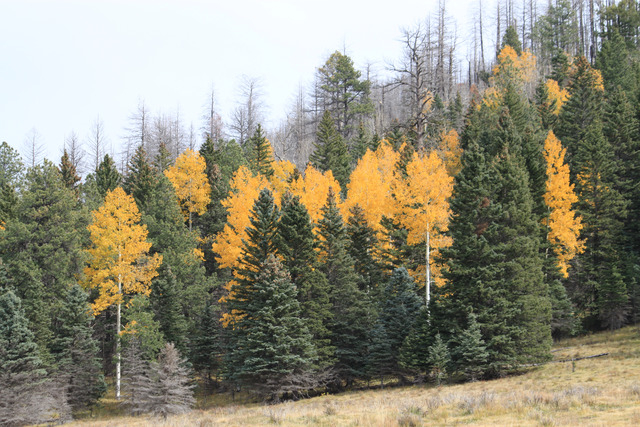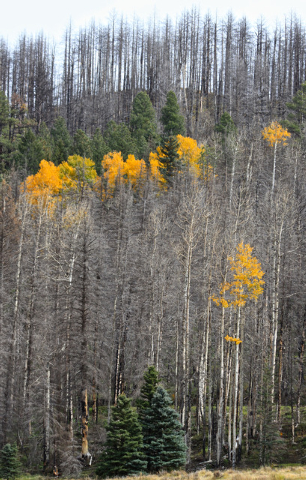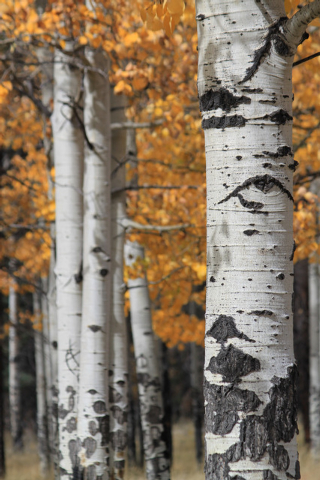Shades of fall across the southwest
LOS ALAMOS, N.M. — From the snow-dusted peaks of Arizona’s San Francisco Mountains to the fire-singed hillsides surrounding this northern New Mexico town, Mother Nature is signaling that fall is here.
For Los Alamos, this year marks one of the first in which the aspens are big enough — and bright enough — to catch the attention of fall leaf-peepers. The area was devastated in 2000 and again in 2011 by record-setting wildfires that wiped out entire mountainsides of old-growth ponderosa pine, fir trees and everything in between.
Aspens and scrub oak have returned to some of the areas charred by the Cerro Grande fire after more than a decade. At the edges of the burn scar left by the more recent Las Conchas fire, aspens can be seen peeking out from behind charred stands of pine trees.
“It’s all lit up right now, and it’s looking kind of neat,” Mike Lippiatt, a Los Alamos resident, said of the fall foliage west of town. “We’ll never see the pine trees again in our day, but at least we’ll see the aspen trees come back. It’s getting better.”
The West has been ravaged by wildfire in recent years, in part because of the combination of overgrown forests and worsening drought. While the flames have reduced the number of spots where Westerners can take in the fall colors, experts say some locations promise to be even brighter as vegetation recovers and aspens fill the void.
Federal and state land managers say fall colors are at their peak in the high country around Flagstaff, Ariz., along the Mogollon Rim and on Mount Lemmon near Tucson. The lower elevations around Oak Creek Canyon and Sedona are expected to begin producing more golden canopies in the next week or so.
In New Mexico, some spots in the far north are already past their peak thanks to cooler temperatures. Areas along the Rio Grande Valley and to the south are beginning to pop with splashes of yellow, red and orange as the aspens, oak and cottonwoods change color.
Timing and intensity vary from year to year depending on the weather and how healthy the tree is heading into the season.
“Our fairly wet and not excessively hot summer may have aided leaf growth and production overall. Then there is the temperature component, which helps to initiate leaf color change in the fall,” said Chuck Maxwell, a meteorologist with the interagency Southwest Coordination Center in Albuquerque.
Another big factor in the Southwest is the wind. Maxwell said the viewing season can be stretched out as long as there are no strong wind events that strip the trees bare.

























